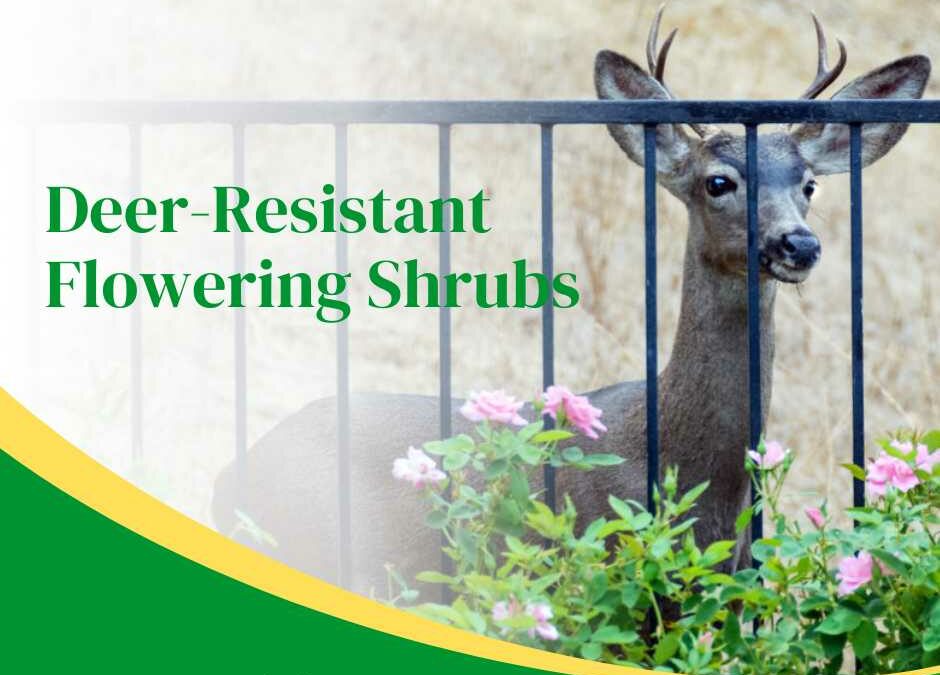==================
A Caveat and Affiliates
First off, a little caveat: within my articles you will find affiliate links, meaning if you buy them, I get a small commission. Your cost is not affected. In addition, I am an Amazon Associate and I earn from qualifying purchases on Amazon.
And yes, if I say that I recommend a product here, it means I truly believe it is a good product. I refuse to recommend any product that I have not researched and believe to be a good value.
Even better, I provide you with a very clear picture of the product, it’s use, and the probable value.
Earning your trust is important to me. I run this website myself and the commissions and donations help support the site.
Sound reasonable and fair enough? Let’s continue to the article.
==================
Looking for flowering shrubs that won’t attract deer to your yard? You’re in luck! There are several varieties of deer-resistant flowering shrubs that you can choose from. In this blog post, we’ll take a look at some of the best options out there. We provide deer-resistant, low-maintenance, or show-stopping plants for your landscaping. Read on to learn more about the top deer-resistant flowering shrubs!
As suburbs grow, deer must go somewhere, which could be your yard. When they start eating your plants, things can get heated. We love and want them on our properties but also wish for greenery and stunning flowers in our gardens. That’s where deer-resistant flowering shrubs step in. These plants let us enjoy watching nature at its best.
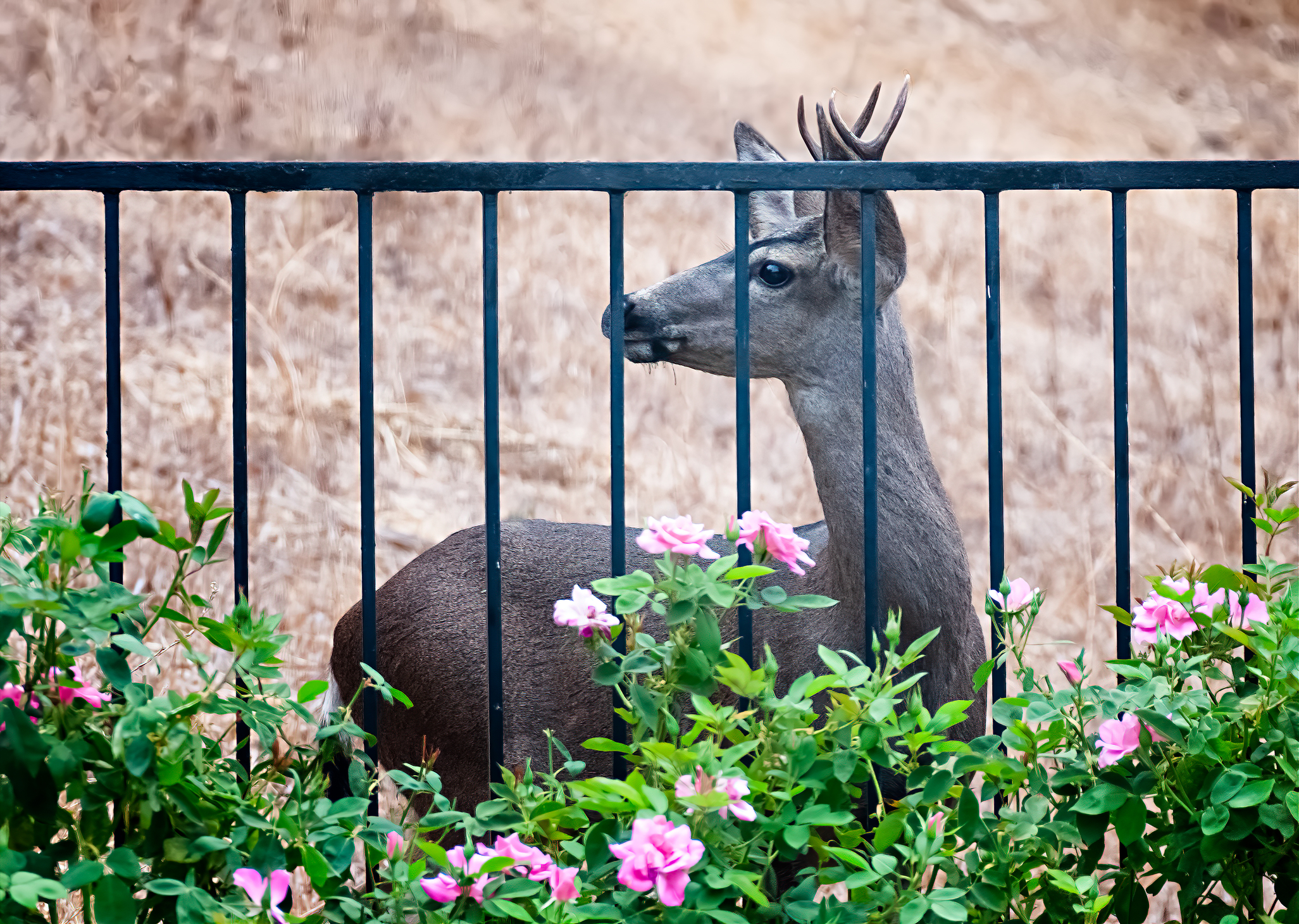
If your landscape sees more frequent deer visits, keeping an eye on your plants and counter deer damage is essential. You can examine deer damage by looking for ragged edges. Since these woodland animals don’t have upper incisors, they damage plants from the ground level up. So, if you see trampled plants, it means your garden is under deer attack.
Moreover, while they could damage gardens throughout the year, spring is the most prominent season. That’s because, during that time, plants are going through new growths, making them more prone to deer damage. Planting flowering plants that deer don’t like and putting up a fence can help. After all, they can make your yard less appealing to deer.
1. Golden Bell Flowering Shrub (Forsythia)
Want to add a burst of color when your garden needs it the most? Golden Bell (Forsythia) is a true sign of spring and among the shrubs that start producing blooms even when there’s still snow. These plants are a small genus of species of 11 deciduous plants known as Golden Bells. Golden Bells and over 700 other Oleaceae family members, like lilacs, feature aromatic blossoms.
People appreciate more than the gorgeous flowers of Forsythia. It is also known for its bright yellow, four-lobed flowers that bloom at the start of spring. Some other prized species within this genus include Meadowlark, Sunrise, and Lynwood. Moreover, some Forsythia species are sprawling, whereas others have a compact nature. You can find a cultivator according to your ornamental preferences. Forsythias are favorite flowering shrubs that deer don’t eat. They grow fast and are often used to make informal hedges and foundation beds.
Care Tips
- Fall or milder months are ideal for planting Forsythias.
- They love sunny to lightly-shaded spots with well-draining soil.
- After blooming, trim these fast-growing deer-resistant shrubs.
- Forsythias appreciate regular watering.
- They don’t need fertilization when grown in amended and maintained soils. Yet, providing them with a slow-release fertilizer in early spring is beneficial.


2. Smoke Flowering Shrub (Cotinus Coggygria)
Smoke shrub or Smoke Tree is another beautiful deer-resistant flowering shrub you can plant in your garden. The deciduous shrub that looks like a small tree produces purple-pink smokey plumes and is often planted as a garden specimen. With an upright, multi-stemmed growing habit, some cultivars have purple or waxy green leaves.
Also, because these plants grow straight up, they are great for more significant landscapes. So you can put them in groups or as a casual hedge screen. A few popular smoke shrub varieties include:
- Daydream: It produces dense, creamy blooms and can grow up to 10 feet.
- Royal Purple: These plants have purple leaves and yellow-orange foliage.
- Nordine: A common variety that strikes dark foliage and purple-red blooms.
- Velvet Cloak: It produces dramatic orange-red smoke.
Care Tips
- It would help to grow your smoke shrub in spots with full sun. Remember that partially-shaded places could make its foliage sparse.
- These drought-resistant flowering shrubs can do well in almost any soil type. But ensure that the soil is well-drained to prevent rot.
- Immature smoke bushes need deep watering twice a week. But after your plant has established itself, water it sparingly (every ten days).
- Moderate temperatures with average to dry humidity levels would keep your smoke shrub happy.
- These plants don’t need heavy fertilization. Yet, spring fertilization or adding a layer of compost is beneficial.
3. Butterfly Flowering Shrub (Buddleia)
Butterfly shrub is another excellent choice for planting deer-resistant flowering shrubs. Planting it in colder climates means seeing arching growth and spectacular blooms. But, it grows like a perennial in hot climates, fading to the root crown in colder climates and reappearing in spring. Butterfly flowering shrub is an excellent choice if you create a pollinator garden.
It has rough leaves and lovely blossoms. These features bring a lot of pollinators, such as butterflies, bees, and hummingbirds. Today, variety development has made it easy to find these bushes in various shapes, sizes, and colors. Thus, you can pick the one that looks best in your garden. Moreover, some varieties can grow up to 12 feet, whereas others are compact and more suitable for more miniature landscapes. In the same way, people appreciate some kinds for their significant clusters of flowers. Folks identify others for their flowering spikes.
Since they are hardy and need minimal care, butterfly bushes are perfect for weekend and professional gardeners. But be aware that these varieties are self-seeding. Also, some regions consider them toxic.
Care Tips
- Butterfly bushes thrive in full sun. Shady conditions could make them weedy and sparse, so at least six hours of direct sunlight is essential.
- You can keep your plant thriving in average, well-drained soil with some moisture.
- Since they thrive in medium-moisture soils, poorly draining environments could damage your plant.
- They don’t need fertilization, but applying a thin layer of compost is beneficial.

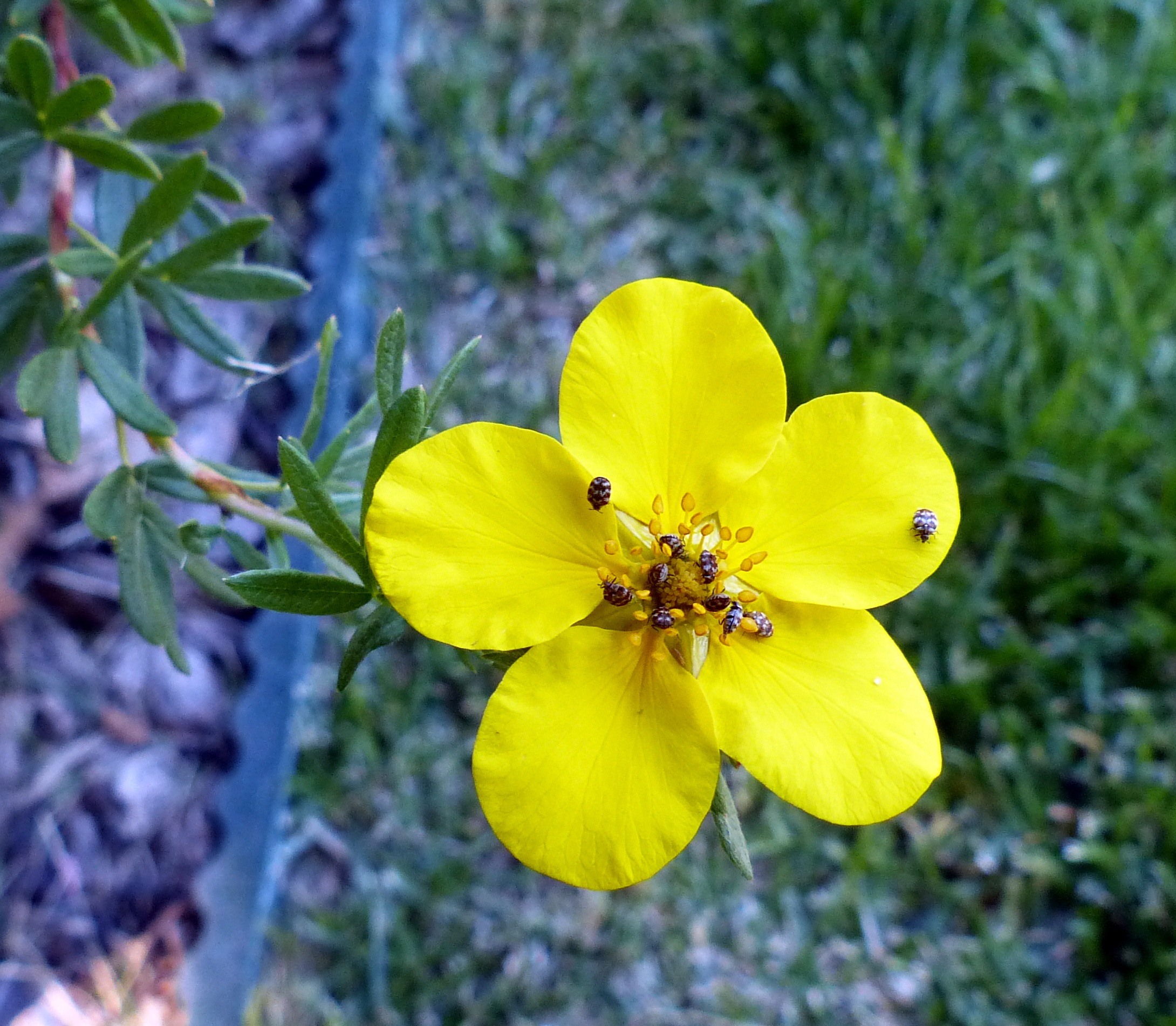
4. Potentilla (Cinquefoils)
Potentilla flowering shrubs are a great addition to any garden. These shrubs are a genus that contains over 300 species. Also, they come in various colors, including white, yellow, pink, and red. They need minimal care, and you can plant these colorful shrubs in beds or borders. Also, Potentillas are drought tolerant, so they’re perfect for arid climates.
In the spring, these shrubs bloomed with a profusion of flowers. Plus, deer tend to stay away from them so that deer-prone areas will be safe from browsing deer. They’re deer-resistant and provide color to your environment.
These hardy plants can grow in a variety of soils and weather conditions. Yet they do best in moist, well-drained soils. They can grow anywhere from 2 feet to 6 feet in height. But their size depends on the variety. Note that some types can even reach up to 8 feet tall or more! These deer-resistant flowering bushes will stand out in any garden.
Care Tips
- Plant your Potentilla during colder months in fall or spring to give its roots an entire growing season.
- Fertile, well-draining soils with direct sun are ideal.
- For the best growth, you must keep your Potentilla wet. Consider this, especially during the first growth stage.
- Ensure to remove dead or damaged branches before the new growth. You can also lightly prune your plant to maintain its shape.
5. Rose of Sharon (Hibiscus Syriacus)
Being a deciduous hibiscus species, the Rose of Sharon strikes abundant stunning blooms during summer and fall. Depending on the variety, its paper-like, five-petal flowers with a three-inch diameter come in various colors – even in bi-colors. The Rose of Sharon grows in an upright, vase-like shape with many branches and beautiful dark foliage.
Moreover, pruning the Rose of Shrub can help maintain a tree-like shape and keep the plant to a single trunk. These plants grow up to two feet per year, and the ideal time to plant Rose of Sharon is in the spring or fall.
Furthermore, these plants are often used as specimens, hedges, or foundations. But remember that the Rose of Sharon is a self-seeding plant. Hence, you’ll have to pull out the seedlings to avoid more of these plants in your yard. It doesn’t need much care, so anyone can grow them as flowering bushes that deer won’t eat.
Care Tips
- Like most other flowering shrubs that thrive in full sun, Rose of Sharon is no exception. You should expose it to at least six hours of sunlight.
- While the Rose of Sharon can survive in partial shade, too much shade can also reduce blooms.
- Rose of Sharon can tolerate various soil types. Yet, a nutrient-rich, well-draining, and acidic soil is ideal.
- Moist soil would yield the best results, but you should protect your plant from wet conditions. So, water only when the soil feels dry.
- Fertilization is optional but recommended, especially if the soil is poor. A slow-release fertilizer early in the spring or late in winter is beneficial.
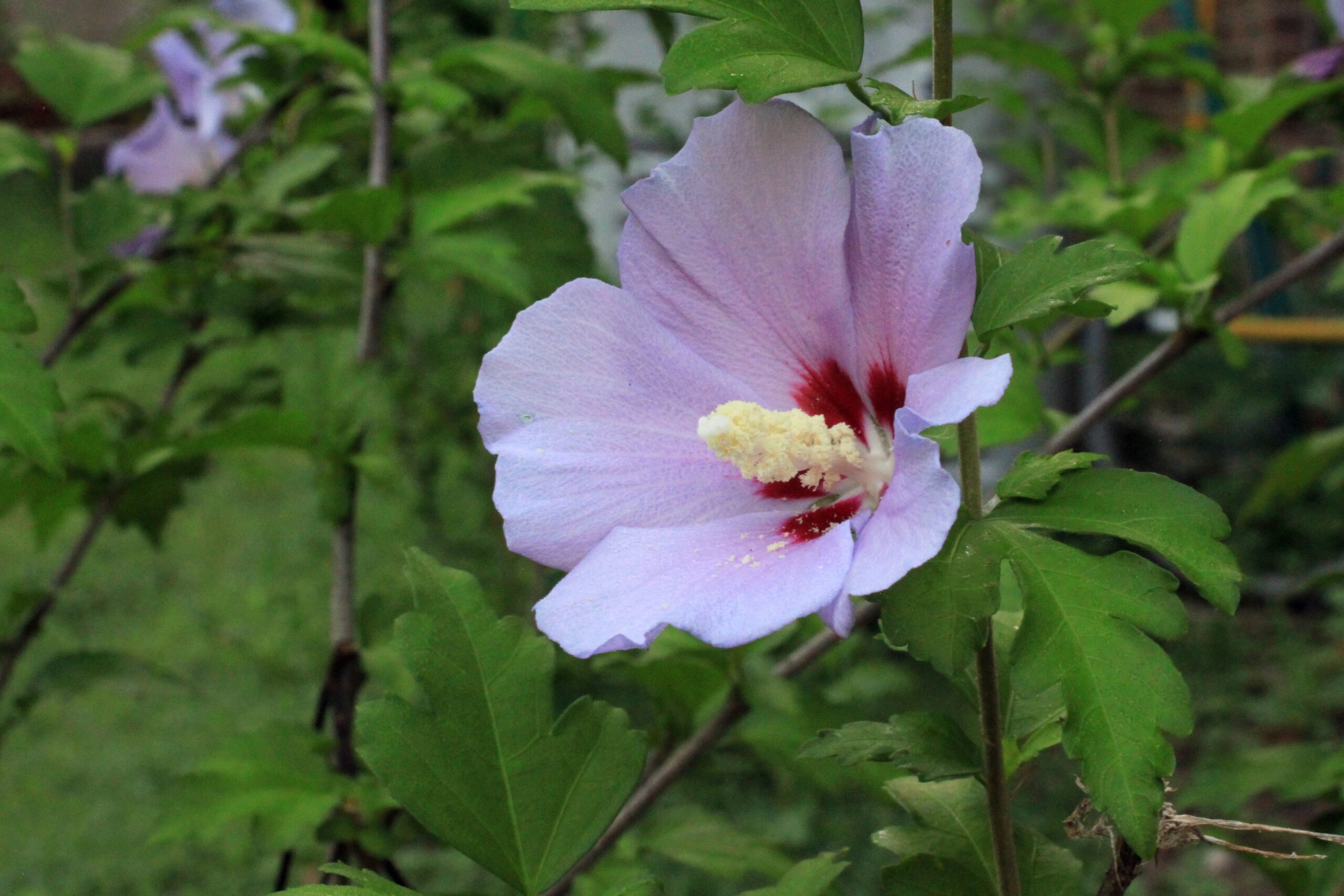

6. Lily-of-the-Valley (Pieris)
Also known as Japanese Pieris, lily-of-the-valley is another stunning deer-resistant flowering shrub. A member of the heath family, it boasts year-round beauty and interest as a landscape plant. Japanese Pieris is an Asian plant, as its name suggests. It has long, reddish-bronze leaves that turn shiny and leathery green.
Also, like the Golden Bell flowering plant, lily-of-the-valley is an early bloomer. It explodes in drooping, beautiful flowers for a couple of weeks in late winter and early spring. Its white or pale pink flowers are like lily-of-the-valley but lack a robust and recognizable aroma. Furthermore, due to its slow growth rate, Japanese Pieris takes considerable time before becoming a mature plant. Also, the slow growth rate of these bushes marks them ideal for foundations and border planting.
Care Tips
- In cooler climates, these plants love the full sun. But, in hot climates, Japanese Pieris prefer to be in places with shade.
- Soils rich with organic matter are ideal for planting Japanese Pieris.
- Ensure that the earth is well-drained and has slight moisture.
- These bushes need frequent watering. Watering once a week should be adequate.
- Fertilization in cooler months and mulching with acidifying organic materials are beneficial.
7. Blue Beard (Caryopteris)
Blue Beard, also called Blue Mist, is another beautiful flowering bush that deer won’t eat. These plants are also trees that have beautiful blue flowers. They can make your garden look nice. Blue Beard’s compact growth and soft gray foliage make these plants an excellent addition to any landscape.
Depending on the climate, you can grow Blue beards as a deciduous shrub or a woody perennial that dies in winter. Blue Beards have beautiful leaves and flowers. Also, they are easy to care for and grow well in drought and shade.
Yet, like other plant species, they also come with their preferences. So, ensuring exposure to enough sunlight is essential. They grow fast yearly, with up to 30-inch growth.
Care Tips
- A location with plenty of sunlight is ideal for Blue Beard to get denser blooms. While they can perform well in partial shade, it would significantly reduce flowering.
- Well-draining, slightly moist soil is essential, especially for immature plants. But, once established, Blue Beard can thrive in arid environments.
- You should water your plants often.
- They are not heavy feeders, but these plants appreciate getting some organic matter.

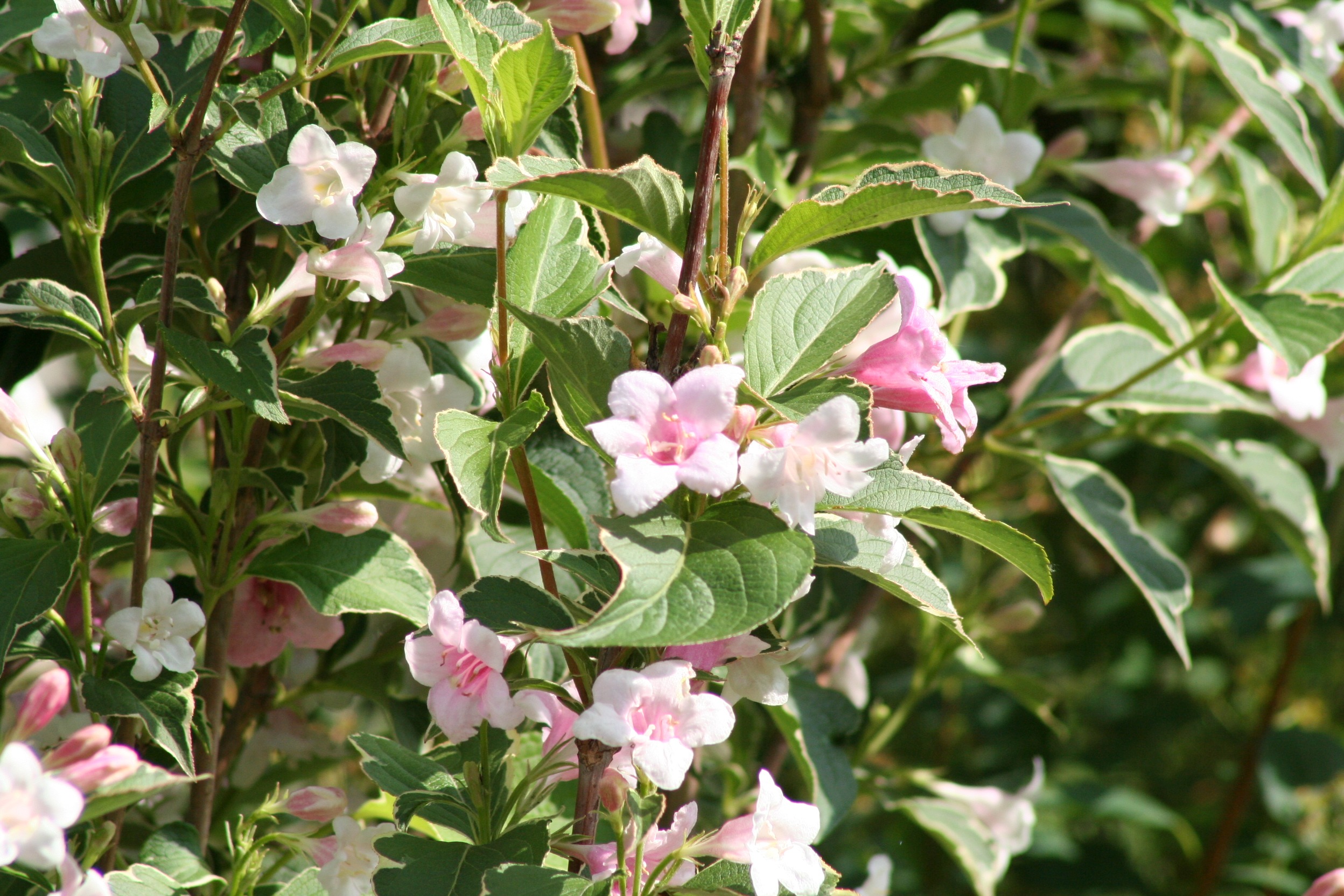
8. Weigela Flowering Bush
Old-time background favorite, Weigela, is another excellent deer-resistant flowering bush. Member of the honeysuckle family, although these bushes took a back seat for a while, new cultivars made a remarkable comeback. They are now a popular option in ornamental landscaping. Weigela plants come from Asia and, on average, grow up to 24 inches each year. If you plan to plant one of these, do so in early spring or late fall. The beautiful green leaves and small, show-stopping flowers attract pollinators to your yard.
Care Tips
- Like most other flowering bushes, Weigela also loves getting plenty of sunlight. But, these plants might also thrive in dappled light or afternoon shade.
Care tips for places that are hot.
- Even though Weigela can tolerate various soils, it will thrive in a well-draining soil mixture.
- Consistent deep watering is essential for immature Weigelas. But, once established, these bushes rarely need water.
- Fertilizing once a year should be enough.
9. Lilac (Syringa Vulgaris)
Lilacs are attractive flowering shrubs prized for their white, pink, and lavender spring blooms. The iconic clusters of tiny flowers have become a symbol of renewal for landscapes. Lilac bushes produce colors from late April to early June. Yet this depends on the climate and location.
When growing lilacs as flowering shrubs that deer won’t eat, it’s best to plant a few of them close to each other. Do this because they need cross-pollination to produce denser blooms. Planting them near other fragrant spring flowers, like peonies or roses, is also a good idea. After all, doing this can make your yard smell incredible.
Besides their gorgeous flowers, lilacs are also prized for their delightful scent. A lilac shrub can infuse the air with its wonderful fragrance in full bloom, adding even more aesthetics to your landscape. Once the flowers fade, you can still enjoy the lush foliage of a lilac shrub – it’s an attractive addition to any landscape all year round. So why not add beautiful color and wonderful fragrance to your garden with a few lovely lilacs? They’ll be sure to brighten up anyone’s day.
Care Tips
- Total sun exposure is vital for getting better and denser blooms.
- Soil with sharp drainage will promote better and healthier growth.
- These plants prefer moderate soil moisture, so avoid planting them in soggy places.
- Not heavy feeders, spring fertilization is beneficial when grown in poor soil.

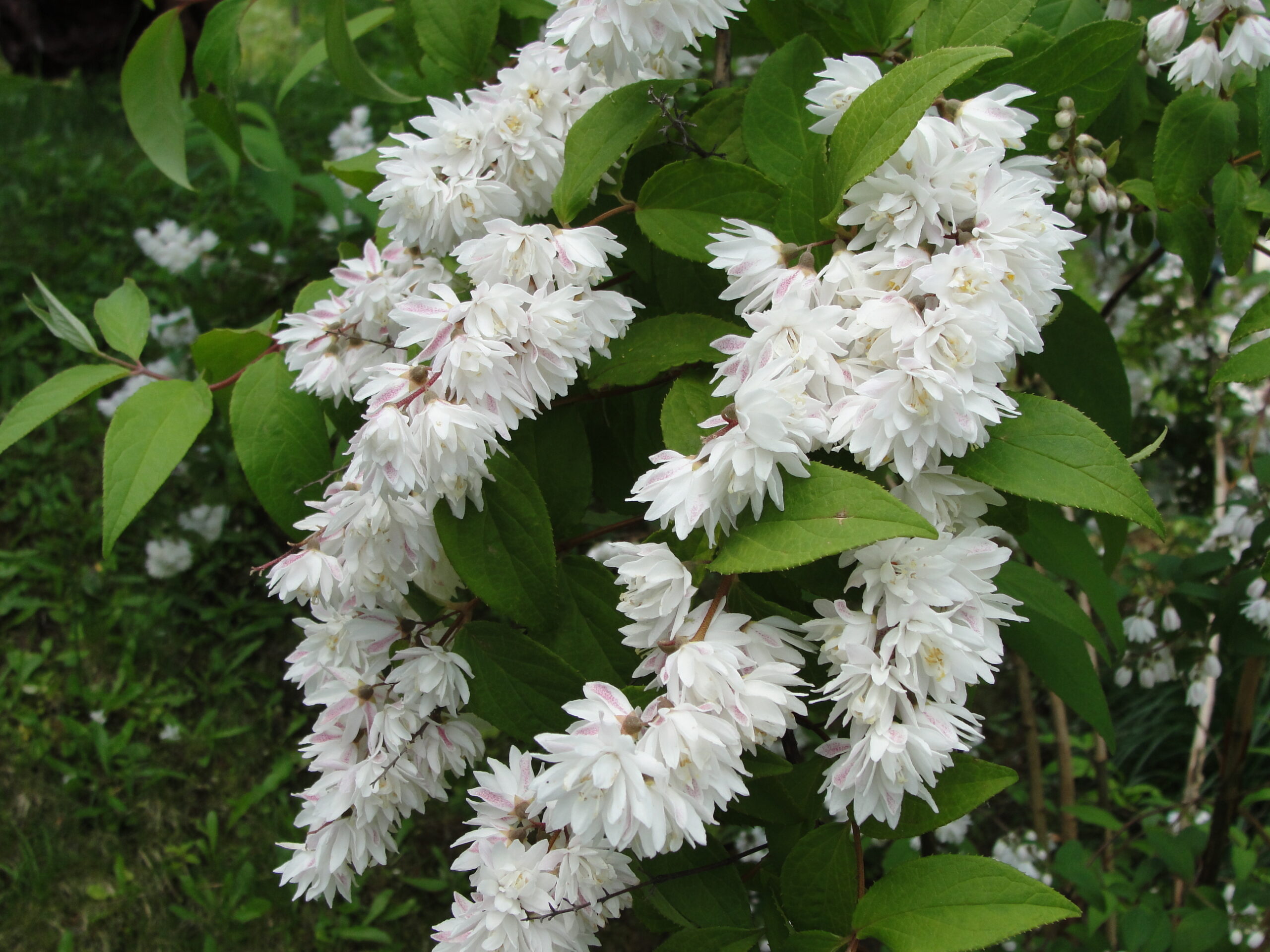
10. Deutzia Shrub
The Deutzia shrub is an excellent addition to any landscape. In the spring, this hardy, low-maintenance shrub blooms. It produces beautiful groups of white or pink flowers. The fragrant flowers attract butterflies, providing plenty of nature during the warmer months.
It’s also easy to take care of. This evergreen shrub needs little trimming and can grow in almost any soil as long as it gets enough sun. With its big clusters of star-shaped blooms that last for weeks, Deutzia is at its best in the spring. So get ready to enjoy your outdoor space in April.
And if you’re looking for something even more unique, some varieties of Deutzia have variegated foliage. These plants can add a special touch of color to your garden. So, why not add Deutzia as a deer-resistant flowering shrub to your landscape? It’ll bring plenty of beauty and delight for many years.
Care Tips
- Rich, well-draining soil is essential for the best results. Yet, these plants can also thrive in various soil types, including sandy and clay.
- Your Deutzia loves getting even watering, but you should avoid overwatering.
- Apply a slow-release fertilizer in early spring and mulch with some organic matter. These things have benefits for healthy growth.
- When your plant blooms, cut it back.
Video credit: @catchygarden7378
Now You Can Choose From the Deer-Resistant Flowering Shrubs
There you have it – 10 deer-resistant flowering shrubs for your landscape. But while all these shrubs can make your garden deer-resistant, it doesn’t mean your landscape is deer-proof. So, you may also want to install a fence to cut the threat. If you can’t put up a fence, you can look for other ways to keep them away. You have the option to use scare devices, repellants, and others. Again, planting flowering plants is more valuable and lets you add more colors to your yard.
We’re glad you found our article about deer-proof flowering bushes interesting. Visit our blog if you get a chance. After all, it also contains other gardening-related posts that could be of interest to you. Reader feedback is also very appreciated. Have you ever had the chance to tend to those flowering bushes? Tell us about the ones you have. Many thanks to you for reading; we hope to see you again in future articles.
Beyond Deer-Resistant Flowering Shrubs
More Fascinating and Related Reads:
FAQs
Which floral bushes can withstand visits from hungry deer?
Humans often have a variety of flowering shrubs in the garden which deer tend to avoid. From Potentilla with its fragrant yellow blooms, to Weigela’s dainty white or pink flowers and Barberry’s spiny leaves and long-lasting red or yellow petals, these plants provide color, added privacy, and can even help reduce stress levels.
Are there moer of these flowering shrubs that can keep deer away?
There are several low-maintenance varieties that remain resilient against hungry deer such as Butterfly Bush with shades from pink to purple and white, Smokebush for its unique smoke-like foliage, Ninebark for its stunning clusters of white, pink or red petals, and Spirea with its clusters of pink or white blossoms.
Is it hard to take care of plants that deer don’t eat?
To protect your beloved shrubs from deer damage you need to consider some preventive measures like constructing fences around them, using netting strategically placed around the area or applying commercial repellent sprays not pleasant to deer nose. This also means that less input is needed on your part when caring for these anti-deer plants – regular watering during dry spells followed by occasional fertilizing sessions should be enough to help them thrive!
